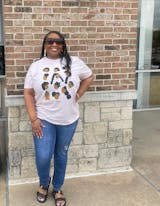Natural Hair Care Products 101

Raise your hand if you are a product junkie. What is a product junkie you may ask? Look in the cabinet of anyone in the natural hair community, and if you find dozens of products, such as clarifying shampoos, moisturizing shampoos, conditioners, deep conditioners, masks, styling puddings, gels, curl creams, co-washes, oils, and anything in between…that my friend is a product junkie. My product shelf used to be loaded with ALL KINDS of hairstyling products, you name it.
Now you may be wondering, what were all of those products I just named? Or what are they all for? It’s very common in the natural hair community that one’s wash and go may only consist of a conditioner and some type of oil. That’s it.
Using only oils on your hair is not enough to keep your crown healthy and moisturized for the long haul (remember the hair grease days of the ‘80s and ‘90s?). Since it’s hard for natural hair to maintain moisture, you need to add a few more steps to your routine to get the job done.

Achieving the perfect wash day is often the compilation of many different products, and there are a few very beneficial and justifiable reasons for it.
Most products usually serve one or two specific purposes, as most wash days/styling require several elements, so using a variety of different products is often necessary.
Now let’s talk about some essential products for building a healthy hair regimen.
Every regimen shares a few essential components, and although your hair type and concerns may alter your hair care routine in some way, here are a few basic steps that every person can benefit from.
1. Cleanse
Cleansing is a balance between removing things like dirt, product residue, and dead skin cells without stripping the hair of its natural oils. Clarifying shampoos work to remove buildup from the hair - it’s like a reset button for your hair. On the other hand, a regular shampoo has mild cleansing agents with more emphasis on moisturizing your hair and making it shiny rather than clean. The trick is to alternate between the two, ideally using a good clarifying shampoo once a week to reset your hair and purify your scalp.

2. Condition
Conditioner is meant to stabilize the pH of the hair after shampooing. Conditioning benefits include moisturizing, added shine, detangling, and frizz reduction.
- Deep Conditioner or Repair Mask: A deep conditioner, or a repair mask, can be used in place of a conditioner after shampooing. This is designed to be left on your hair longer, then rinsed out completely. These will not only stabilize the hair’s pH, but work to rebuild compromised protein structure, increase hair’s elasticity and enhance moisture retention overall. These products are especially great for chemically damaged or dry hair. Deep conditioners or repair masks should be used weekly on damaged hair and hair that is just beginning a new healthy hair regimen.
- Leave-in Conditioner: A leave-in is meant to be applied after your hair is freshly shampooed and conditioned, and doesn’t need to be washed out. This will help further detangle, reduce frizz, and maintain moisture throughout the day. A leave-in conditioner is also designed to prime your hair before you begin styling.

3. Moisturize
To add further hydration and protection from dryness and breakage to the hair, you may want to use a styling cream that does everything from softening and defining to moisturizing and volumizing.

4. Seal
When it comes to oil, a little goes a long way. Oils can enhance your hair’s natural oils and lock in moisture and strengthen your hair strands. Donna's Recipe Strength Hair Oil is a dual hair and scalp oil to add shine, seal in moisture and help scrunch out the crunch for soft, defined and frizz-free curls.
5. Gel
These provide hold to your hair, from a light hold to a super strong one, depending on the product you use. Gels can also hold in moisture, enhance and define curls and control frizz.

6. Treatments
- Scalp treatment: An exfoliating scalp treatment can unclog follicles, stimulate circulation and calm issues like scalp itchiness.
- Protein treatment: Frizzy or damaged hair may need an extra boost from protein. These monthly treatments fill in gaps/holes in the cuticle, strengthening and smoothing strands. Experiment to find the one that works for you.
7. Tips
I know it sounds cliché, but consistency is key.
You’re not going to notice dramatic results overnight — although the effects of masks and certain styling products can be noticed instantly, it takes time for your hair to get used to new products.
When it comes to the frequency of use with products, it’s best to consult a professional. There are no hard rules for how often you should use each product. For example, some people wash their hair three times a week, while others wash only once a week. And some do it even less. When in doubt, ask a professional for personalized advice targeted to the products you use and the needs of your hair.
Your individual hair needs will naturally change over time. There’s a saying that hair changes texture every 7 years. Unlike most of the rumors floating around the internet, this one does have an element of truth behind it. Noticing these changes and responding appropriately can keep your hair looking healthy.
A good rule of thumb is to swap products as the seasons change. In the summer months, you may want to choose more lightweight and anti-frizz formulas to help hair in the face of humidity. As the winter months arrive, you may need to opt for products with extra hydrating properties.
Which products are in your hair care regimen? Share with us below.


















Thanks for sharing Tab!
Leave a comment